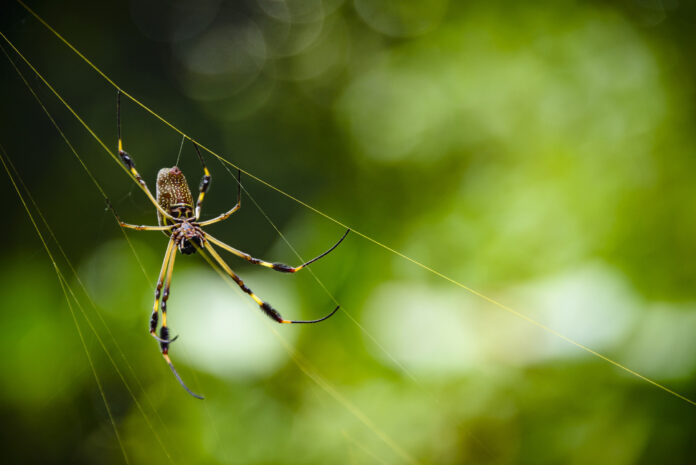Introduction to Spider Silk and Venom
Spiders have been a subject of fascination for many years, and their unique characteristics have inspired scientists to study them. Two areas of interest are the sticky silk threads produced by cribellate spiders and the potent venom found in some spider species.
The Sticky Silk of Cribellate Spiders
Cribellate spiders produce silk threads that are not only sticky but also tougher than Kevlar. These threads are used to trap prey, which can often be larger than the spider itself. What’s remarkable is that the spider can entrap its prey without getting caught in its own web. This is made possible by the unique structure of the silk-spinning organ, which combines several nanometer-thick threads into one. The calamistrum, a comb-like structure on the spider’s legs, plays a crucial role in this process.
Uncovering the Secrets of the Calamistrum
Researchers at the RWTH Aachen University, led by Anna-Christin Joel, decided to study the technique used by cribellate spiders to produce their silk. They wondered what would happen if the calamistrum was removed from the spider’s legs and whether this structure held the key to the anti-adhesive qualities they were researching. By shaving the calamistrum from the spider’s legs, they found that the nanofibers got stuck to the spider’s legs, confirming their hypothesis. Further investigation revealed that the surface of the calamistrum is covered in nanoripples, which prevent the nanofibers from making contact with the comb’s surface.
Replicating the Nanostructures
The researchers replicated these nanostructures by lasering the patterns onto PET foils, which were later coated with gold. The resulting comb showed anti-adhesive properties that were almost as efficient as those found in spiders. This innovative technology project has the potential to open the door to the creation of new devices able to handle extremely delicate nanomaterials.
A Powerful Painkiller from Spider Venom
Spider venom is known for its potent neurotoxic properties, but it could also be a source of inspiration for a new generation of non-addictive painkillers. Chemical biologist Christina Schroeder has been studying a peptide found in the venom of the Chinese Bird spider, called Huwentoxin-IV. This peptide inhibits the activation of sodium channels, preventing the flow of sodium ions that trigger pain receptors in the nervous system. Schroeder has found a way to improve the efficiency of this peptide and enable the targeting of specific pain receptors, which could lead to the development of a new painkiller.
Conclusion
The study of spider silk and venom has led to some remarkable discoveries, from the anti-adhesive properties of the calamistrum to the potential of Huwentoxin-IV as a painkiller. These findings have the potential to inspire new technologies and treatments, and further research is needed to fully explore their possibilities. As scientists continue to study the unique characteristics of spiders, we can expect to see more innovative solutions to real-world problems.

